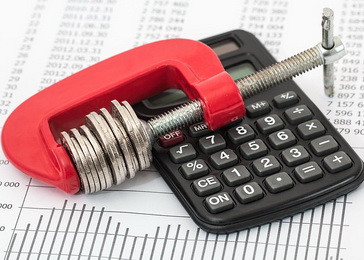 Today we mark the International Day for the Eradication of Poverty, focused on the need for greater inclusion in stimulating prosperity, dignity and human rights. This day represents an opportunity for various initiatives that will symbolically call on countries to endeavour to improve the status and living standards of the population.
Today we mark the International Day for the Eradication of Poverty, focused on the need for greater inclusion in stimulating prosperity, dignity and human rights. This day represents an opportunity for various initiatives that will symbolically call on countries to endeavour to improve the status and living standards of the population.
Regarding Serbia, the absolute poverty level of the country has been stable and in slight decrease during the last three years. The absolute poverty line, i.e. the threshold for adequately meeting all basic needs was RSD 11,694 per consumer unit in 2016, with 7.3% of the population, i.e. around 500 thousand persons having expenditures below that level, including around 100 thousand children. The latest and revised data on absolute poverty has been published through the cooperation of the Social Inclusion and Poverty Reduction Unit of the Government of the Republic of Serbia and the Statistical Office of the Republic of Serbia, the consequence of a change in the methodology of drafting the Household Finance and Consumption Survey. The publication issued in September 2017 provides a detailed overview of the poverty profile over a ten-year period (2006-2017), showing that there are no significant differences in poverty factors and profiles. Poverty remains most prominent in non-urban areas, particularly in the region of Southern and Eastern Serbia, among households with multiple members, with an unemployed and inactive head of the household or households where the head is without education or with a low education level.
The regional overview of poverty indicates poverty to be the lowest in the Belgrade region (4.0% of poor), being three times less represented than in the region of Southern and Eastern Serbia (the region with the highest poverty rate, amounting to 13%).
Regarding inequality, both indicators used for monitoring it (Gini coefficient and Quintile ratio) are showing a trend of slight decrease (source: “Poverty in the Republic of Serbia 2006-2016 – revised and new data”). The region of Šumadija and Western Serbia also stands out in a somewhat more uniform distribution of consumption compared to other regions.
Social transfers have a significant impact on poverty reduction – in 2016 they reduced the poverty rate by 26.3%. In other words, if there were no social transfers, the poverty rate would, instead of the current 7.3%, amount to 9.9%, with 170 thousand more persons in poverty.
A cause for concern is the fact that in a European framework and according to the European comparative methodology of relative poverty, Serbia remains one of the most vulnerable countries. Since the start of the implementation of comparative EU surveys (Survey on Income and Living Conditions) Serbia has been the country with the highest at-risk-of-poverty rate, with no decreasing trend noticeable for this rate. The threshold for poverty risk at the monthly level for an individual is RSD 15,416, and is lower in comparison to all EU member states except Romania.
According to Eurostat, a quarter of the population (25.5%) is under risk of poverty, in practice meaning they face lower income than the rest of the population and an increased risk of being unable to adequately meet part of their needs.
A total of 22% of the population is exposed to a permanent risk of poverty (source: Eurostat). This means that 22% of the population had income below the at-risk-of-poverty threshold in 2016, and at least during two of the preceding three years.
 Government of the Republic of Serbia
Government of the Republic of Serbia















 pdf [271 KB]
pdf [271 KB]
Leave a Comment